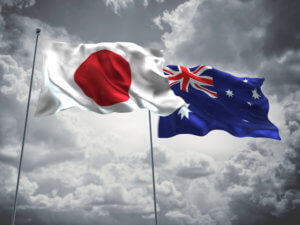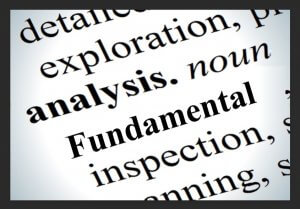Price points in forex trading continue to be a popular tool but are they everything they promise to be?
While there is a veritable myriad of social media accounts and youtube channels out there singing the praises of knowing about and even using psychological price levels or price points, there are also those telling us traders to be wary. It is important that you get to hear this other side of the argument so you can make your own informed decisions.
What Are Psychological Levels?
So what are we even talking about here? Well, the simplest way to put it is that there is a phenomenon where the price of a currency pair will sometimes pause or bounce at a certain level and this level is a round number. In other words, prices that end in a double zero form lines across your chart where there could be significant price action in given circumstances. These numbers get called full levels or the big figure or anything imaginative forex bloggers conjure up (but full levels and the big figure are the most common).
There are a couple of other sub-categories that are worth being aware of here too even though they are even rarer than the big figure. The first is the intermediate or mid-figure (i.e. numbers between two full levels, which end in 50 rather than 00). The second is the bank level, which is a purely theoretical construct where the idea is that big banks like to use the levels ending in 80 and 20.
The idea behind these levels is that they are a tool you should keep in your toolbox and be aware of so that you can make use of them to enter into trades. This is where much of the disagreement in the forex online community occurs.
How Are Psychological Levels Traded?
There numerous ways to make use of these levels and lots of proponents or critics sitting on either side egging you on or warning you to stay away. The most common advice seems to be that these levels are useful for planning a breakout trade or a reversal. This is at best challenging or, according to some, total lunacy.
The best advice out there seems to be that you should be aware of these levels, mostly because they generate a greater volume of trading. This increases demand, if that was something that was worrying you, and does make a successful trade more likely. However, it is important that you tread extremely carefully here and use a number of other indicators and tools to ensure that price action around one of these levels is tradeable.
Problems?
Are there any problems with psychological levels? You bet!
The first of these problems is that in the vast majority of cases the price of a currency pair will simply blow through a psychological price level, whether it is a full or round level (the big figure), an intermediate mid-figure (ending in 50) or a bank level at 20 or 80. That’s it. In most cases, nothing happens. This is a problem in more ways than one. First, it means that the very significance of these price levels is called into question. If the price just ignores them on its way through then what is their value supposed to be in the first place? Secondly, if the price fails to respect these levels on so many occasions, how can you know, calculate or intuit whether this is one of those rare occasions where the price will approximate something like respecting the level?
Ah, you think, there’s the rub! It’s precisely those rare occasions where psychological price levels are useful.
Well, there’s another problem with that too. It is precisely because psychological price levels are a thing in the online forex sphere – precisely because they are so talked about – that they could actually be dangerous. When the price approaches a full or big figure level, suddenly a lot of traders are paying attention. The volume of trading spikes as lots of traders try to set up breakouts or reversals and this creates a hotspot. Suddenly everyone is on the radar of the big players in the market. It’s like sharks being drawn to a feeding frenzy by smaller fish causing a commotion. Those big players, the sharks, now have to decide whether all this activity is worthy of manipulating the price so as to crash through the stop/losses of a large number of smaller fish.

You see, when the price of a currency pair approaches a nice round number – basically any number ending in a double zero – the forex social media universe comes alive with comments about the significance of this level. And for the army of inexperienced or downright inept traders out there, a pressure to trade builds up. But the big players, large institutional traders, and big banks will know this and they have a good sense of where the majority of stop/losses will be set. So one thing you’ll often see is that before a reversal or breakout happens, the price will spike in order to first crash through the stop/losses of potentially hundreds of hopeful but misguided smaller traders looking to take advantage of a situation they had heard was going to go in their favor.
Of course, that isn’t how it always plays out, that’s merely one scenario you have to be wary of.
So What Can You Do?
Well, the first thing that is smart to do is actually see for yourself. Take a currency pair that you trade regularly and look at its historical performance. You will want to go back a significant length of time so you catch as many examples of the price crossing these psychological levels as you can. If you’re a day trader, go back a year and if you trade on smaller timescales, go back far enough to sweep up a sufficient number of cases to look at. Draw lines across your chart at significant psychological levels and then go investigating to see how the price behaves around these levels.
What you will mostly see when you do this is that in a huge majority of cases the price just crashes through these psychological levels as though they weren’t there. And remember, that is ultimately the biggest criticism of this whole approach. In those cases where the price does linger at a level that you’ve picked out, explore whether your trading process would give you an entry point. The critics will say that even those times that appear tradable will ultimately be of little or no use. They will tell you that even price movements that appear, at first glance, to be somewhere you could enter a trade behave in reality more like traps that will draw you in but lead to failure.
The best thing to do is to see for yourself.
Takeaway
If there is one thing to take away from this, it is that psychological levels certainly exist in the minds of the forex chattering classes. People on social media and running trading blogs or websites talk about them a lot and, in that sense at least, they exist. Purely as a result of that chatter, it is useful to be aware of them.
But also be very aware that there are a growing number of critics of psychological price levels as a trading tool. The most ardent critics will tell you that the best advice is to simply ignore them. Trade as though they do not exist. This might be a little extreme as it is always good to be aware of various market phenomena, even if you don’t end up using them to actually enter trades.
Regardless of your level of experience or know-how, you should know that you only make use of any trading tool once you have put it through its paces by backtesting and demo testing it. These psychological levels are no different and you should not rely on others promoting them as the next big thing unless you are sure you can carefully and methodically incorporate them into a system that works for you.






